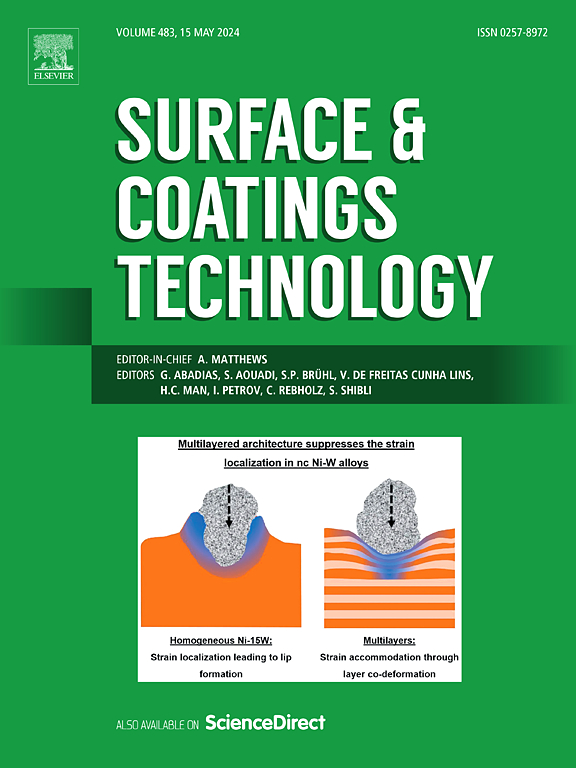Toward bioactive calcium carbonate and hydroxyapatite-based coatings via plasma electrolytic oxidation – A review of challenges and current state-of-the-art
IF 5.3
2区 材料科学
Q1 MATERIALS SCIENCE, COATINGS & FILMS
引用次数: 0
Abstract
Bioactive implant coatings on metallic substrates are pivotal in modern biomedical engineering, offering both temporary and long-term solutions for repairing hard calcified tissue defects. Coatings combining calcium carbonate (CC) and hydroxyapatite (HA) are particularly effective in mimicking natural calcified tissues, embodying the principles of fourth-generation biomaterials. Existing techniques largely constrain the development of fully functional CC/HA coatings. Concurrently, plasma electrolytic oxidation (PEO), one of the most prospective approaches for metallic surface chemical modification, remains underexplored in the context of carbonates. This paper comprehensively reviewed the challenges and limitations associated with the parallel incorporation of CC and HA into PEO coatings, focusing on the additives' aggregate state, physicochemical properties, synthesis methods, and PEO process parameters. Additionally, an optimum strategy for creating Ti-based CC/HA coatings was identified via deductive approach and causal analysis. Standard PEO baths comprising only soluble components were recognized as inapplicable, whereas those representing biphasic particle suspensions exhibited undeniable advantages for the stated purpose. The ultimately preferred bath recipe consisted of CC particle suspension synthesized via carbonation route and further subjected to competing dissolution-precipitation and chemisorption reactions in dibasic sodium phosphate electrolyte. In sum, the current study provides a reliable conceptual basis toward practical implementation of CC/HA PEO coatings.

求助全文
约1分钟内获得全文
求助全文
来源期刊

Surface & Coatings Technology
工程技术-材料科学:膜
CiteScore
10.00
自引率
11.10%
发文量
921
审稿时长
19 days
期刊介绍:
Surface and Coatings Technology is an international archival journal publishing scientific papers on significant developments in surface and interface engineering to modify and improve the surface properties of materials for protection in demanding contact conditions or aggressive environments, or for enhanced functional performance. Contributions range from original scientific articles concerned with fundamental and applied aspects of research or direct applications of metallic, inorganic, organic and composite coatings, to invited reviews of current technology in specific areas. Papers submitted to this journal are expected to be in line with the following aspects in processes, and properties/performance:
A. Processes: Physical and chemical vapour deposition techniques, thermal and plasma spraying, surface modification by directed energy techniques such as ion, electron and laser beams, thermo-chemical treatment, wet chemical and electrochemical processes such as plating, sol-gel coating, anodization, plasma electrolytic oxidation, etc., but excluding painting.
B. Properties/performance: friction performance, wear resistance (e.g., abrasion, erosion, fretting, etc), corrosion and oxidation resistance, thermal protection, diffusion resistance, hydrophilicity/hydrophobicity, and properties relevant to smart materials behaviour and enhanced multifunctional performance for environmental, energy and medical applications, but excluding device aspects.
 求助内容:
求助内容: 应助结果提醒方式:
应助结果提醒方式:


